I would like to add count and percentage labels to a grouped bar chart, but I haven't been able to figure it out.
I've seen examples for count or percentage for single bars, but not for grouped bars.
the data looks something like this (not the real numbers):
age_group Mis surv unk death total surv_pct death_pct
0 0-9 1 2 0 3 6 100.0 0.0
1 10-19 2 1 0 1 4 99.9 0.0
2 20-29 0 3 0 1 4 99.9 0.0
3 30-39 0 7 1 2 10 100.0 0.0
`4 40-49 0 5 0 1 6 99.7 0.3
5 50-59 0 6 0 4 10 99.3 0.3
6 60-69 0 7 1 4 12 98.0 2.0
7 70-79 1 8 2 5 16 92.0 8.0
8 80+ 0 10 0 7 17 81.0 19.0
And The chart looks something like this

I created the chart with this code:
ax = df.plot(y=['deaths', 'surv'],
kind='barh',
figsize=(20,9),
rot=0,
title= '\n\n surv and deaths by age group')
ax.legend(['Deaths', 'Survivals']);
ax.set_xlabel('\nCount');
ax.set_ylabel('Age Group\n');
How could I add count and percentage labels to the grouped bars? I would like it to look something like this chart

